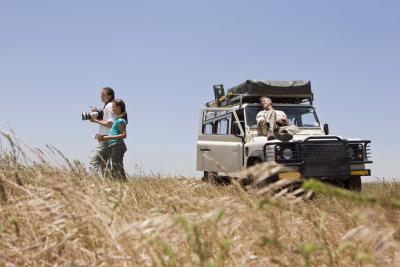
Jeep vehicles have been successfully manufactured and used for over 50 years. They got their start when a small utility vehicle was needed for military operations, which would soon include World War II. One of the most successful examples was the Willys Jeep, which ended up the military's vehicle of choice, winning the major contract. Jeeps have always had some problems with rollover and turn accidents since their conception. Any Jeep owner should familiarize himself with some of their more dangerous characteristics.
Jeeps have been manufactured in short cab and SUV cab-over variants. The suspension clearance, or height, in both cases, from the chassis to the ground's surface sits abnormally high in comparison to other passenger vehicles. The increased height shifts the center of gravity upward, making the Jeep top-heavy, both in turns and off-road surface conditions. The propensity for rollover dramatically increases.
The narrow wheelbase of Jeep vehicles decreases its lateral stability, both in turns and off-road applications. It takes less force to move the vehicle laterally than a vehicle with a wider wheelbase. Medium or heavy abrupt turns can result with the inside wheels leaving the ground, momentarily losing traction. Recovery can be difficult when the wheels regain contact. Coupled with the increased chassis height, the possibility of rollover risk rises exponentially.
Multiple passengers, or loads exceeding manufacturer's limits, raises the center of gravity further which increases the rollover potential and erratic handling during medium and hard turns. Over-loaded Jeep roof racks, extra passengers riding in the rear bed or enclosed trunk area, all contribute to top-heavy conditions.
According to a survey conducted by the Insurance Institute for Highway Safety from 1997 to 2005, in 12 states, the weakest roofs of the SUV's tested caused the most fatalities. The Jeep Grand Cherokee topped the list as one of the vehicles that had a roof that crushed or collapsed with the exertion of only one and one half its own weight. Jeeps that do not have roll bars or cages cause more fatalities than vehicles that have strong structural roof members.
Jeep door latches are prone to premature opening during a rollover accident. The latches fail to lock properly, and when subjected to violent forces, they spring open and eject the passengers from the vehicle.
Jeeps do not come equipped with laminated safety glass, which crushes upon impact but remains structurally intact. In the event of a rollover, passengers can be ejected through the glass panels, rather than being contained within the vehicle.
A problem exists with the Jeep seat belts, in that they do not automatically retract and hold the passengers tight during a rollover accident. This results in a high passenger ejection rate from the doors or glass areas.